A Simple Fix for the US Patent System
The Legal Requirement for Working Models
At one time, the US Patent Office maintained repositories throughout the country, where inventors could forward their patent models at the expense of the Patent Office. Rural inventors could apply for patents without significant obstacles, because applications could be submitted by mail free of postage.
It was required that a patent accompany a scratch-built miniature model no larger than 12" by 12" by 12" that showed how an invention works.
Patent models were required from 1790 to 1880. The Congress of the U.S. abolished the legal requirement for them in 1870. However, the U.S. Patent Office (USPTO) kept this requirement until 1880. Some inventors still willingly submitted models at the turn of the 20th century.
Patent models are no longer required by the USPTO. However, in some cases, an inventor may still want to present a "working model" as an evidence to prove actual reduction to practice in an interference proceeding.
The Argument against Requiring Working Models
Scientific American, v 38 (ns) no 8, p 113, 23 February 1878
The Commissioner of Patents on Models
Commissioner Spear takes a very sound and sensible ground on the model question. He says in substance that the models usually forwarded with applications are unnecessary, that they always add largely to the expense, and are troublesome to keep in the Patent Office. This coincides with our own opinions already expressed.
Models are a great tax on the resources of inventors, any examiner ought to be able to obtain as clear ideas as he desires through good drawings and clearly written specifications; and the late fire in the Patent Office has shown that to the dry accumulation of old models might well be applied a stronger term than troublesome.
The Commissioner proposes to reserve the right to call for a model where an examiner is in doubt as to the practicability of an invention. This is well enough, but there is no need of the Commissioner proposing when he has only to issue the necessary order. The law already says that "the applicant, if required by the Commissioner," shall furnish a model, etc. The Commissioner has only to break loose from mere precedent, which is not at all obligatory, establish at once the better regime that he contemplates, and so earn the thanks and commendations of his countrymen.
Scientific American, v 38 (ns) no 9, p 129, 2 March 1878
Patent Office Models
We have before us an argument in favor of the abolition or modification of the patent office model system, prepared by Mr. H. Howson, of Philadelphia, to support a petition in that behalf, which has been signed and forwarded to Congress by numerous patentees and others interested in patents. Mr. Howson is himself a patent solicitor of long experience. That he has carefully studied the question he discusses is evident from the exceedingly able and exhaustive manner in which he marshals his statements, with which probably a majority of our readers will fully concur.
The principal points of Mr. Howson's argument -- to which we shall have further reference hereafter -- are summed up in the following ten sentences.
First. That it has hitherto been the practice of the Commissioner of Patents, under the law, to demand a model with every application for a patent in which the character of the invention admits of one.
Second. That the making of these models is a serious tax on inventors, involves the premature exposure of inventions, and needless delay in making up applications for patents, and detracts from the revenue of the Patent Office, because the demand for models frequently deters inventors from making applications.
Third. That models are not as a rule necessary for attorneys in preparing applications for patents, or for Examiners of the Patent Office in the performance of their duties.
Fourth. That with rare exceptions complete well executed drawings afford more ready means of determining the character of an invention, and should be, in any case admitting of them sufficient for the interpretation of the specifications forming part of the patent.
Fifth. That owing to the furnishing of models, there is a tendency in the Patent Office to admit drawings which are wanting in fullness and perspicuity, and which would not be admitted in the absence of models, an evil resulting in the delivery of patents which cannot be easily understood without the aid of models.
Sixth. That the models deposited in the Patent Office occupy a large amount of space which could be devoted to much more useful purposes.
Seventh. That the increase of models must eventually involve the necessity of either disposing of many of them to make room for the rest, or of finding room for the rapidly growing collection in places outside of the Patent Office.
Eighth. That the models deposited in the Patent Office are rarely working models, but generally fragmentary, and in many cases distorted representations of the machines they are intended to represent and are consequently unfit for an industrial museum.
Ninth. That an industrial museum worthy of the name can be best established by permitting patentees and manufacturers to deposit at their option and at their own cost properly proportioned and working models of patented machines which have proved to be successful in practice.
Tenth. That ample provision should be afforded to investors and the public for the examination of drawings of patented inventions.
This was a Serious Mistake!
As a result of not requiring working models, the patent office is deluged with applications for ideas and plans for devices that have never been built and thus not proven to merit a patent.
The ability for anyone to be able to send in an application, without applying due diligence to prove the claims in a working model are adding unnecessary complexity, straining examiner staff and patent office resources and allowing 'submarine patents' as well as futuristic ideas to lay claims on future inventions where they should not have any reward since they never built it.
I suggest that the new system simply provide for direct examination of a working prototype, either presented at the patent office examining office or inspected and tested by travelling examiner engineers to verify the device operates as claimed.
It would not be necessary for the patent office to keep working models, simply the documentation of the test of the working model which remains in the possession of the inventor. This would cut down on the need for storage of hundreds of thousands of models as was a problem in the past.
Expanding to Deal with Unproven Patent Claims isn't the Answer!
The mistake is in wanting to expand the number of examiners and further complexify the patent system with more patent trolls, submarine, frivolous and unproven patents.
Patent Office head lays out reform strategy -
The delivery of patent rulings takes longer than applicants would like, slowing down the introduction of innovations into commercial markets. The agency is trying to remedy that problem in part by hiring more examiners, Dudas told me. Last year, the USPTO hired 1,218 patent examiners, for a total of 5,500, and plans to hire 1,000 per year for the next five years. The USPTO received in excess of 440,000 patent applications and completed 332,000 patent applications in 2006. However, the total backlog of patent applications in around 700,000. In previous years, funds collected in the patent process were diverted from the agency, and now they have been reconstituted, allowing for the mass hiring of examiners. The USPTO budget for 2007 is $1.8 billion and the agency employs 8,500 people.

My 03/01/08 eMail to
Under Secretary Jon Dudas at the USPTO
Greetings Mr. Dudas!
The problem with the patent office is the failure to require working models for claimed devices.
If anyone can patent an unproven idea using 'submarine patent' techniques, then when the real inventor who actually spends the money and time to build and test a device, should not be required to pay money to someone who just dreamed up an idea that they never built.
One of the changes should be to make it a requirement that any patent application for hardware (at least) must demonstrate a working device to verify it is real and not some fantasy or idea trying to capture future technology based on discoveries or processes not yet made.
Sure, it will generate more work but it will require due diligence on the part of the claimant to prove their device...thus automatically REDUCING the number of claims if they have to show a working device.
Consider the logic of it....an infininte stream of time and resource wasting IDEAS presented for patenting, that haven't been proven or a small stream of working devices. Its a no brainer.
This FORCES the claimant to be SERIOUS about their claim and thus takes all that work off the patent office plus PURIFIES the patents granted with absolutely working technology.
In 3-5 major cities, setup regional patent application and testing centers where inventors can apply AND SHOW their working devices.
Thus if the claimant is SERIOUS, it will be easy for them to bring their machine to the center for demonstration and verification of the claims.
No question there are devices that are NOT PORTABLE...in that event, have engineer teams who can travel to the inventors site to witness and test the claim. MAKE THE INVENTOR pay the testing fee!!!!!
This again will force them to be SERIOUS and not be producing frivolous claims because they will have to spend the money to build it and spend the money to have it tested remotely if necessary...not to mention traveling to the regional centers to demonstrate the unit as part of the process.
Please think about this...because it will AUTOMATICALLY CULL many frivolous patent applications that are wasting the time and resources of the patent office WHEN inventors are REQUIRED to demonstrated their claims in working hardware.
Its much like global warming...what is the point of cleaning the environment if we continue to pollute it with combustible fuel sources?
The same for the patent office...do you continue to hire more people and spend more money spending attention on unproven patent claims, often frivolous or submarine in nature?
Or do you PUT THE WORK ON THE INVENTORS....make THEM prove their case and the patent office simply verifies it.
Imagine a PURE PATENT SYSTEM of absolute proven working technology. Not millions of ideas and unbuilt, unproven fantasies hoping to capture someone elses FUTURE work by taking advantage of a broken system.
This is very important for the future of patents in general and for the streamlining and reality checking of the US Patent Office.
If there is any way I can help, feel free to contact me. Thanks for your time and please do consider these suggestions and WEIGH the costs of endless chasing of unproven concepts where the inventor made no effort to build or test their IDEA,
thus wasting the resources of the patent office,
OR making the inventors PROVE their seriousness and making it easier for the patent office to do MEANINGFUL WORK with a lasting contribution to the knowledgebase of mankind.
I have no axe to grind and am just trying to help straighten out a broken system that can be repaired so easily.
Nos vemos (seeya!)
Jerry W. Decker / KeelyNet

$$$ 14 Ways to Save Money on Fuel Costs $$$
Not Biofuel, Solar, Fuel Cells, etc..
and NOT acceleration/braking/weight type tips!
...Many Free Bonus Pages of INCREDIBLE INFORMATION... |
|
 |
Download it NOW!
$16.95!

( 1.8MB eBook )
|

... |

High Voltage & Free Energy Devices Handbook
...keys to EV Gray's Fuelless Engine... |
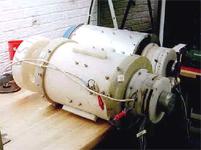 |
Only $15.00
Download it NOW!
( 11MB eBook )
|

...more info... |
| Order High Voltage eBook on CD with US/Canada Shipping - $20.00
|
Order High Voltage eBook on CD with International Shipping - $25.00
|

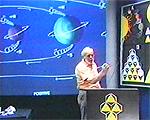
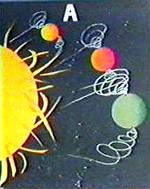
 |
The Physics of Crystals
includes insights into Pyramidal and Tetrahedral Geometry
How they work and how to use them for novel effects.
Incredible, information packed, over 2 Hour long DVD describing many unusual and original experiments including transmutation of elements, energy extraction, increasing plant growth, healing the body and more!
...more info... |
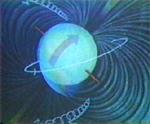

 |
Physics of Crystals DVD - $25.00
includes US/Canada shipping
Physics of Crystals DVD - $30.00
includes International shipping
|
|

the Little Pyramid eBook
...how to build, safely experiment with and use Pyramids...
based on the authors' original research |
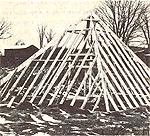 |
Only $5.00
Download it NOW!
( 1.22MB eBook ) |
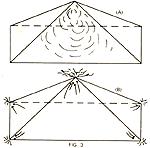
...more info... |

Page Last Updated
03/01/07
|
Please allow 3-4 weeks for shipping
to or from Mexico
You are visitor
 since 03/01/07
since 03/01/07
hit counters
|
Payment can also be made by Postal Money Order
for any item above to be shipped on CD or DVD with the correct item and price
For 14 Way Gas Saver or Pyramid ebook,
add $5 for US/CAN or $10 for International shipping
made out to Jerry Decker
(NO OTHER NAME PLEASE, NOT VANGUARD SCIENCES
or Jerry Decker/Vanguard Sciences
or I can't cash it here) and mailed to;
Jerry Decker
APDO PO Box 17, C.P.
Chapala, Jalisco, MEX
45900
|
If you have questions or comments, Contact Here.

Plenum News Capsules - Stochastically Updated
Interesting Dynamically Updated News
"Never tell the truth to people who are not worthy of it." - Mark Twain

|